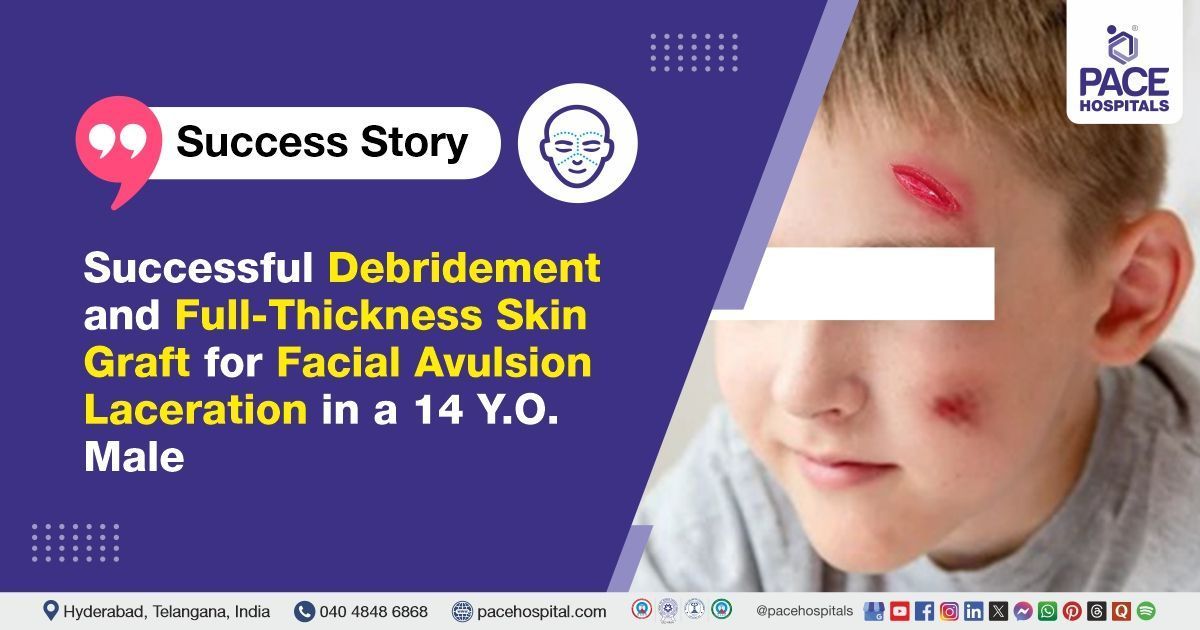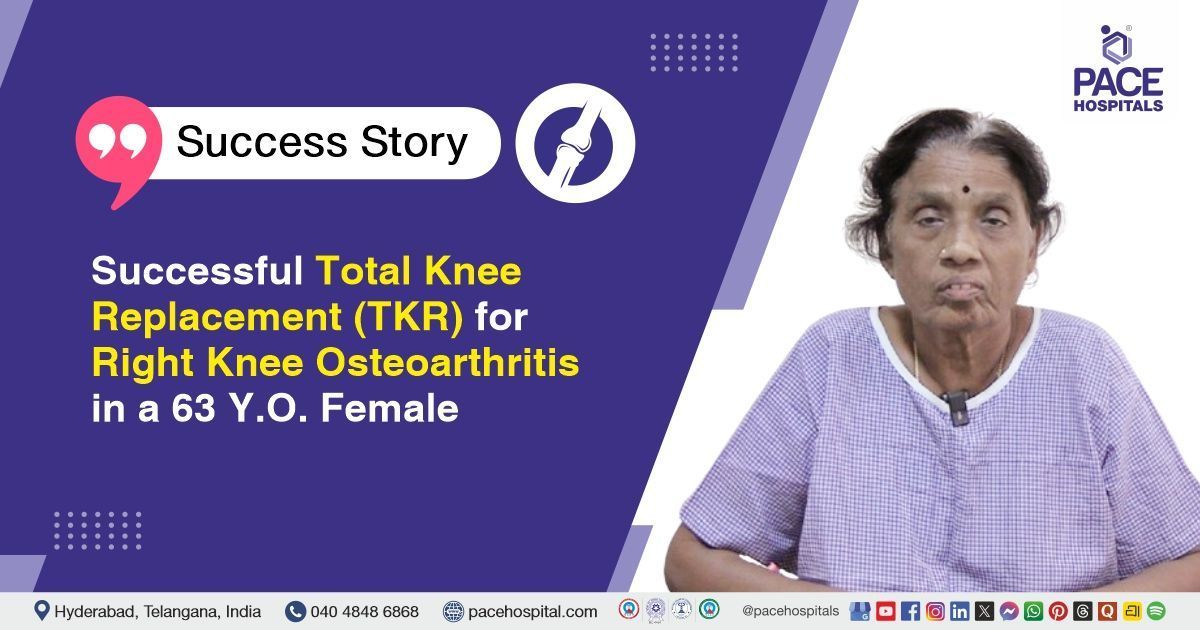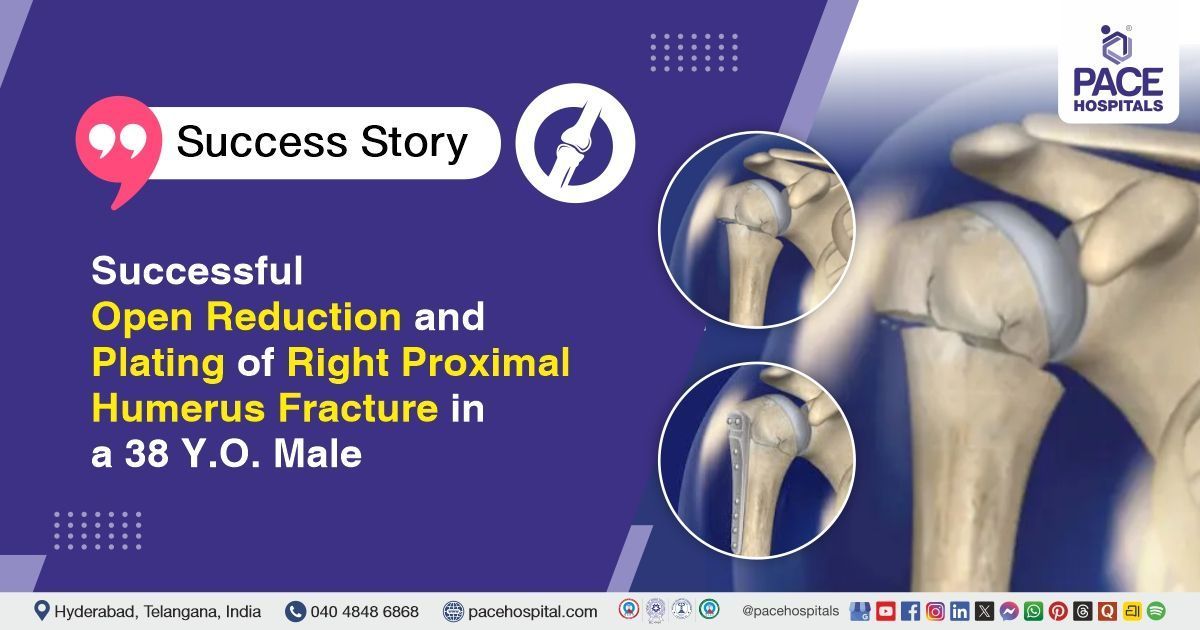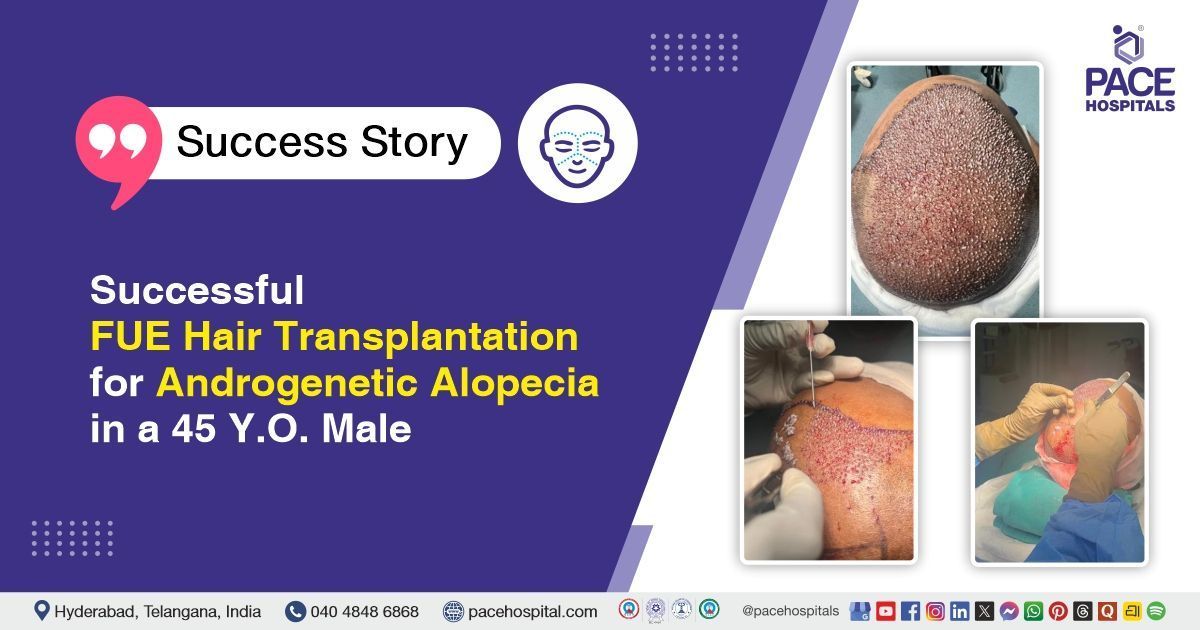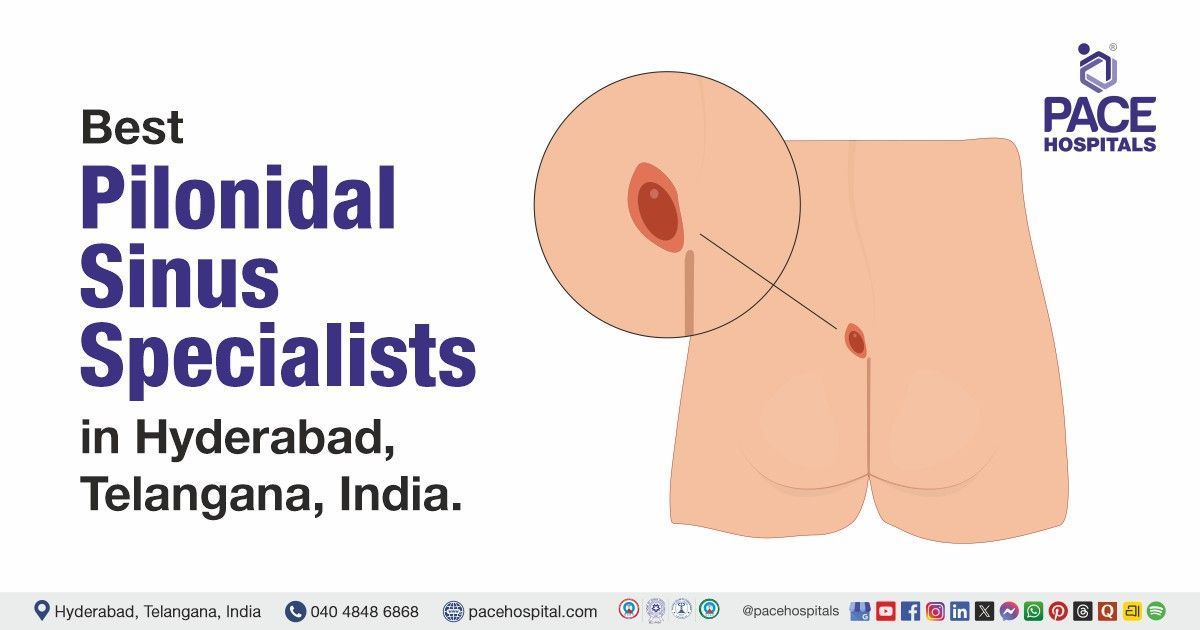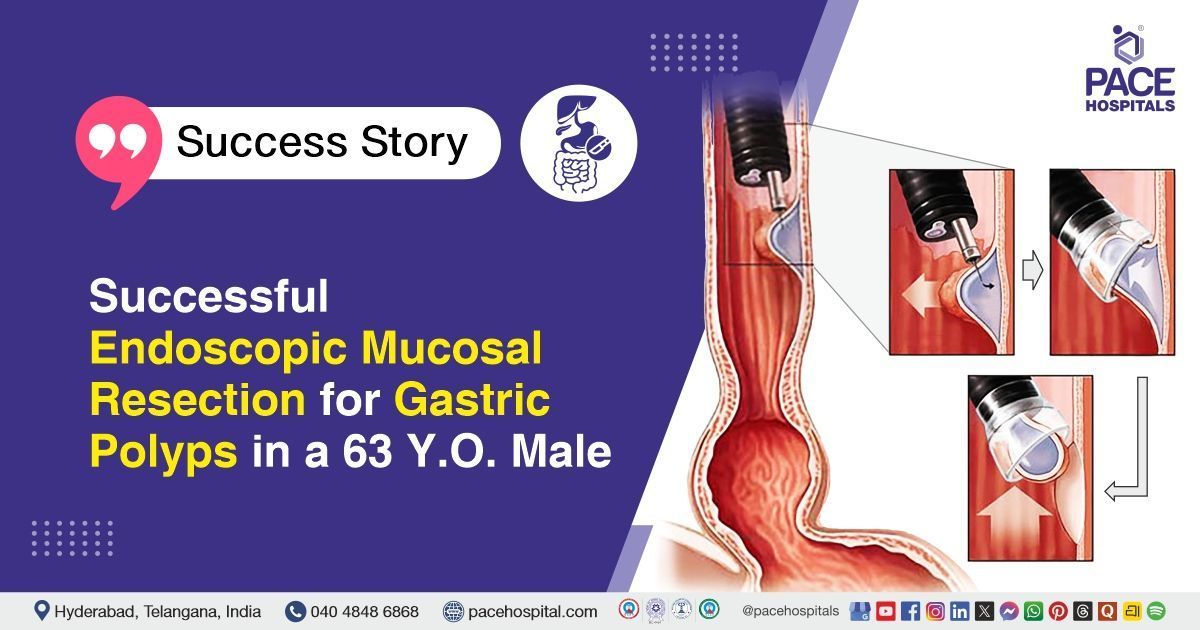Successful Debridement and Full-Thickness Skin Graft for Facial Avulsion Laceration in a 14 Y.O Male
PACE Hospitals
PACE Hospitals’ expert Plastic and Reconstructive Surgery team successfully performed Debridement, Full-Thickness Skin Grafting and Suturing on a 14-year-old male patient who presented with an avulsion laceration (a portion of tissue forcibly detached) on the forehead and abrasions on the right cheek and forehead following a bicycle accident. The procedures were performed to restore the affected area and improve the patient’s facial appearance.
Chief Complaints
A 14-year-old male patient with a
body mass index (BMI) of 16 presented to the Plastic and Reconstructive Surgery Department at
PACE Hospitals, Hitech City, Hyderabad, with complaints of facial wounds, including avulsion laceration and abrasions, following a fall from a bicycle.
Past Medical History
The patient was a known case of suspected depression and had been on regular psychiatric medication. There was no known history of drug allergies, chronic illnesses, or previous surgeries relevant to the presenting condition.
On Examination
The patient was conscious, coherent, and cooperative. General condition was stable, and vital signs were within normal limits. There were no abnormal findings such as pallor, icterus, cyanosis, lymphadenopathy, clubbing, or pedal edema. Local examination revealed a lacerated wound with avulsed skin over the forehead and abrasions on the right cheek. No other abnormalities or injuries were detected on systemic examination.
Diagnosis
Following the clinical examination, the Plastic and Reconstructive Surgery team conducted a thorough assessment, including a detailed review of the patient’s medical history and a focused evaluation of his facial injuries.
To confirm the diagnosis and determine the extent of tissue damage, the wounds on the forehead and right cheek were carefully examined. The assessment revealed an avulsion laceration over the forehead, along with abrasions on the right cheek and forehead. There were no signs of additional systemic injuries or complications such as loss of consciousness, bleeding, or neurological deficits.
Based on the confirmed diagnosis, he was advised to undergo
Avulsion Wound Treatment in Hyderabad, India, under the care of the Plastic and Reconstructive Surgery team to restore the injured area and improve facial appearance.
Medical Decision Making
After a detailed consultation with Dr. Kantamneni Lakshmi, Senior Consultant Plastic, Reconstructive & Aesthetic Surgeon and cross-consultation with Dr. T Manisha Choudary, Consultant Endodontist for dental evaluation and follow-up care, including dental scaling and polishing, a comprehensive evaluation was carried out to determine the most appropriate diagnostic and therapeutic approach for the patient. The surgical team conducted a thorough assessment, including a detailed review of the patient’s medical history and a focused physical examination of the facial wounds. Clinical evaluation confirmed the presence of avulsion laceration and abrasions from a bicycle fall. The extent of tissue damage warranted surgical intervention to restore the affected area.
It was determined that the patient had an avulsion laceration and abrasions, which caused significant damage. Wound debridement, full-thickness skin grafting, and suturing were identified as the most effective interventions to clean the wound, repair tissue loss, and promote optimal healing.
The patient and his family were thoroughly counselled regarding the severity of the injury, the surgical procedure, potential risks, and the importance of the procedure to restore function.
Surgical Procedure
Following the decision, the patient was scheduled to undergo Debridement, Full-Thickness Skin Grafting, and Suturing in Hyderabad at PACE Hospitals under the supervision of the expert Plastic and Reconstructive Surgery Department.
The following steps were carried out during the procedure:
- Preoperative Preparation: The patient was taken into the operating room and positioned appropriately under aseptic conditions. General anesthesia (short GA) was administered. The facial region, including the forehead and right cheek, was cleaned with an antiseptic solution and draped to maintain a sterile field.
- Wound Assessment and Debridement: A thorough examination of the facial wounds was performed. The avulsion laceration on the forehead and abrasions on the cheek were inspected. All devitalized, contaminated, and necrotic tissues were meticulously debrided to create a clean wound bed. A copious saline wash was given to reduce bacterial load and cleanse debris.
- Full-Thickness Skin Graft Application: The avulsed skin over the forehead was prepared to be used as a full-thickness skin graft. The edges of the graft were trimmed for proper approximation. The full-thick skin graft was then carefully placed over the cleaned forehead defect and secured in place using 6-0 Rapide Vicryl sutures.
- Suturing of Laceration: Remaining lacerations over the forehead and cheek were approximated and sutured in layers. Fine absorbable sutures (6-0 Rapide Vicryl) were used to achieve cosmetic closure. Hemostasis was maintained throughout the procedure.
- Dressing: After achieving hemostasis, a sterile aseptic dressing was applied to the operated site.
Postoperative Care
The postoperative period was stable and uneventful. The patient received intravenous antibiotics, analgesics, and gastric acid suppressants. Wound hygiene was maintained with aseptic dressings, and the graft site appeared healthy with no signs of infection or rejection. The patient tolerated oral intake well and was discharged in stable condition with follow-up instructions.
Discharge Medications
At the time of discharge, the patient was advised to take an oral antibiotic to prevent postoperative wound infection and promote healing. A topical antibiotic ointment was prescribed for local application to maintain wound hygiene and reduce the risk of superficial bacterial contamination. A proton pump inhibitor was included to minimize gastric irritation associated with the use of antibiotics and analgesics. An oral analgesic was advised to manage postoperative pain and discomfort. In addition, an antiseptic mouthwash was recommended to ensure proper oral hygiene and support recovery following minor dental trauma.
Advice on Discharge
The patient was advised to maintain proper oral hygiene as part of postoperative care. Wound hygiene should be ensured through regular cleaning and application of prescribed topical medication. A normal diet may be continued as tolerated.
Emergency Care
The patient was informed to contact the emergency ward at PACE Hospitals in the event of any emergency or the development of symptoms such as fever, abdominal pain, vomiting, swelling, pain at the surgical site, or signs of allergic reaction.
Review and Follow-up Notes
The patient was advised to return for a follow-up consultation with the Consultant Plastic, Reconstructive & Aesthetic Surgeon in Hyderabad at PACE Hospitals two days after discharge for wound evaluation and dressing change, with a prior appointment. Additionally, a review was scheduled in the Dental OPD after 10 days for scaling and polishing.
Conclusion
This case highlights the successful management of facial avulsion lacerations through timely surgical intervention involving debridement and full-thickness skin grafting under general anesthesia. The patient demonstrated good postoperative recovery with stable vital signs and no complications. Proper wound care and follow-up were emphasized to ensure optimal healing and functional restoration.
Holistic Surgical and Postoperative Care in Facial Avulsion Repair
Managing facial avulsion lacerations successfully involves timely debridement, accurate full-thickness skin graft application, and careful closure performed under short general anesthesia to restore normal facial contour and function. Surgical precision minimizes tissue damage and maximizes graft survival. Postoperative management focuses on maintaining wound hygiene, administering systemic antibiotics, and controlling pain to reduce complications. Integrated care from the
Plastic surgeon / Plastic surgery doctor and dental specialists ensures all aspects of facial and oral injuries are treated comprehensively. Educating the patient on wound care and maintaining regular follow-up visits enables optimal healing and cosmetic results. A multidisciplinary strategy is key to improving both functional recovery and patient satisfaction.
Share on
Request an appointment
Fill in the appointment form or call us instantly to book a confirmed appointment with our super specialist at 04048486868

